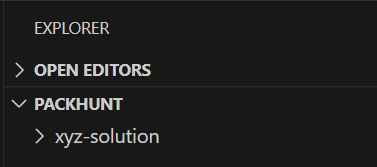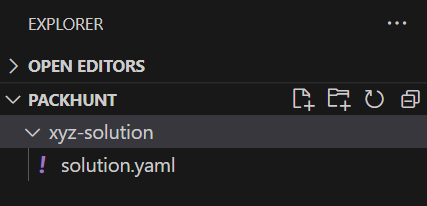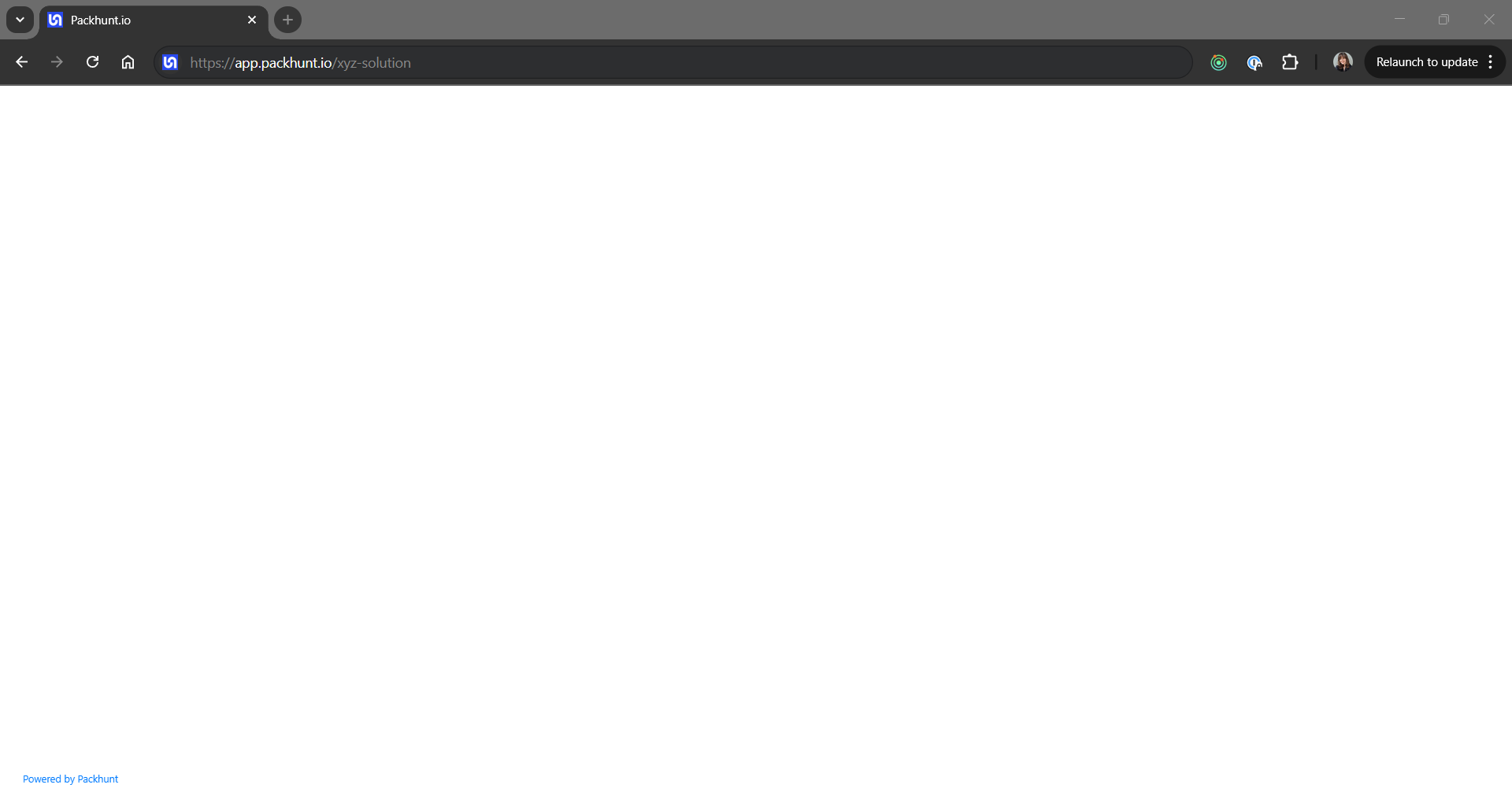How to set up a solution
Prerequisites
- You have the organisation, where you’d like to deploy your solution. To create a new organisation, see the how to create a new organisation guide.
- Make sure that you have installed the Packhunt CLI and logged in .
- To use Rhino Grasshopper definitions in your Workbench solutions, install the Packhunt plugin via the Rhino Package Manager.
- We suggest that you use VSCode to write your configuration files. Find out more about how to set up auto-completion in VSCode with YAML schemas.
1. Set up your Packhunt folder
- Create a folder on your local computer to store all your Packhunt solutions. We’ll refer to this as your “Packhunt” folder.
For example C:\Users\John\Documents\packhunt\
2. Set up your solution folder
-
Your solution folder should contain all the files related to your solution including the configuration file, Rhino Grasshopper files and images used in the solution.
-
In your Packhunt folder, create a folder for your first solution. We refer to this as your “solution” folder.
For example C:\Users\John\Documents\packhunt\xyz-solution\
ℹ️ The name of your solution folder can be used to generate the name of the solution and will become part of the URL that is used to access your solution.
❗ The name must be globally unique start with a lowercase letter and may only contain lowercase alphanumerics and dashes(-).
3. Open your Packhunt folder in VSCode
To open your Packhunt folder containing your solution folder:
- Open VSCode.
- Go to File and select Open Folder.
- When prompted, select your Packhunt folder.
The folder hierarchy should look like the image below.

4. Configure your solution
Configuration files are written in a YAML text file (YAML stands for “yet another markup language”). To create a configuration file:
- In VSCode file explorer, create a new file called
solution.yamlFor exampleC:\Users\John\Documents\packhunt\xyz-solution\solution.yaml
The solution folder should contain the solution.yaml file as shown below.

- To configure a solution, add the following lines to your solution.yaml file.
kind: Solution
version: v0
- To learn more about the Packhunt configuration language, see the fundamentals of Packhunt configuration.
💡 See the schema tips on how to use auto-complete.
5. Deploy your solution
-
Open the terminal window in VSCode. Find out more about how to open a terminal window in your OS.
-
In the terminal window, make sure that you are in your Packhunt folder.
-
If not, navigate to the parent folder where you created your solution folder.
-
On Windows (Powershell), MacOS and Linux, use the
cdcommand. For example:cd C:\Users\John\Documents\packhunt\
-
-
To deploy your solution run the following command in the terminal.
ph deploy solution -o <org-slug> <solution-name>For example, let’s say your organisation is
johnsmithand your solution’s name isxyz-solutionC:\Users\John\Documents\packhunt> ph deploy solution -o johnsmith xyz-solution💡 Your solution’s name is the same as your solution folder’s name.
-
If deployment succeeded, you should see the following:
Running deployment for solution 'xyz-solution' in organisation 'johnsmith' √ Running checks √ Deploying template √ Deploying project Successfully deployed solution 'xyz-solution' 🚀 Your solution is available at: https://app.packhunt.io/xyz-solution
6. View your web-app
- To view your web-app, copy the solution URL that is shown in the terminal window.
- In the example, the URL would be
https://app.packhunt.io/xyz-solution.
- In the example, the URL would be
- Open the copied URL in one of our supported browsers.
- You can also access the web-app via the Developer Platform.
After following the steps above, your web app should look empty, as shown in the example below.

For more explanation on solutions, see the configuring solutions fundamentals page.
Configuration
See the solution configuration docs for more information.